The Tractor that Stole the Show

“We ought to build a great big plow and tractor just to promote our companies. We need something with about 600 horsepower, and we need a 12-bottom plow. When we leave that show they’ll know we were there.”
-Bill Dietrich
At the 1974 Farm Progress Show near Fort Dodge, Iowa, dozens of people swarmed around “Big Blue,” Jon Kinzenbaw’s paint-barely-dry, 20-ton concoction that coupled two, re-powered John Deere tractors into an eight-wheeled, four-wheel drive behemoth. The crowd buzzed as “Big Blue,” with Jon in the cab, appeared to be stuck. He was attempting to pull Kinze’s new 12-bottom plow, but the tractor, despite its 600 horsepower, was going nowhere. Its front wheels had spun down into the soft, heavy clay. Jon kicked the front end into neutral, put the back end in a low gear and let out the clutch, and the back end spun down about a foot.
The crowd buzz grew louder. People said, “He’s stuck. He can’t pull that big plow.” Kinze detractors were delighted that this upstart welder from Ladora, Iowa, whose innovations and improvements of factory equipment had become farmer favorites, had bitten off more than he could chew. Or had he?
In his own words, Jon explains how the story of being stuck ended, and that the idea for “Big Blue” grew out of a coffee shop conversation.
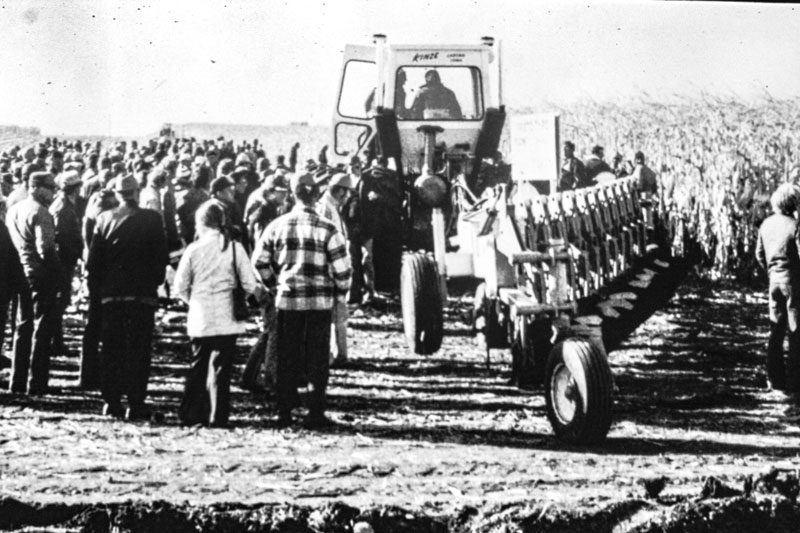
Sketching on a Napkin
“We ought to have a mascot,” Bill Dietrich told me as he and I were talking about what we should try next. This was after the 1971 Farm Progress Show at Van Horne, Iowa, where our re-powered John Deere 5020 pulling our adjustable seven-bottom plow ran circles around Deere’s new 7020 and its seven-bottom plow. Bill’s company, DMI, was a registered exhibitor each year at Farm Progress. He said, “We ought to build a great big plow and tractor just to promote our companies.” He continued, “We need something with about 600 horsepower, and we need a 12-bottom plow. When we leave that show they’ll know we were there.”
On a napkin, we sketched out how we thought that plow should be built. Bill said, “It should be two, six-bottom plows that pivot in the middle so that it’s not all one piece. A 12-bottom plow would be too long end-to-end.” So I sketched on a napkin how I thought that would go, and he agreed. We did more doodling, and I said, “Well, you put a pair of wheels out here on the land. And you put one up here in the furrow. And then in the middle, you’ve got to have these two wheels because you’re carrying the back end of one plow and the front end of another. But the plow bottoms all ought to be in line.”
We made the front plow with a two-point mounting and mounted the second plow onto it so that it all would look like one machine. Bill said, “Well, I’ll furnish the two, six-bottom plows and anything else I can do to help, but you build the tractor.”
Big Blue Comes to Life
That was the beginning of “Big Blue,” which I also called “Double Trouble” when it was giving me fits, because it had two of pretty much everything, from engines to oil pressure gauges to throttles. I bought a new 6030 axle and transmission from John Deere. The 6030 was the successor to the 5020 tractor. Then I bought a burned-up 5020, so I had two, nearly identical, axles. I took the clutch housing and shortened it up to position the engine closer to the axle. Then we hooked the two halves together with a big homemade frame, and equipped it with a cab I hand-built.
This all happened over a two-year period in my spare time. In the fall of ’74, we were working on the Thursday afternoon before the show started. We didn’t have any fuel tanks or hood on it yet. Neither the tractor nor the plow was painted. But we were going to have it in the show the next week, only five days away.
Thursday night rolled around, and some John Deere people traveling between the Waterloo plant and Moline stopped by. Their route came right past my shop in Ladora, and they came by enough that I knew them on a first-name basis. They saw what I was working on, and one of them said, “Oh, boy, this thing would be a real show-stealer, wouldn’t it? It’s too bad it isn’t done.” They laughed a little, and I knew they were chiding me. Well, little did they know I had every intention of getting it there.
My employees, Leo Rudolphi, a farmer friend from Marengo, Iowa, and I worked ’round the clock, and it seemed like the whole town knew what we were doing. On Saturday night, we finished the electrical work in the cab and we had the tractor to the point that it was time for a test drive. We drove out west of town at midnight — no headlights — guided by a couple of pickups in the lead and a procession of cars behind us. I drove it into a field, put the plow in the ground and made several rounds. I couldn’t believe how it worked. It worked so well that by 2:30 in the morning we headed back to town and continued to finish it up and get it ready to paint.
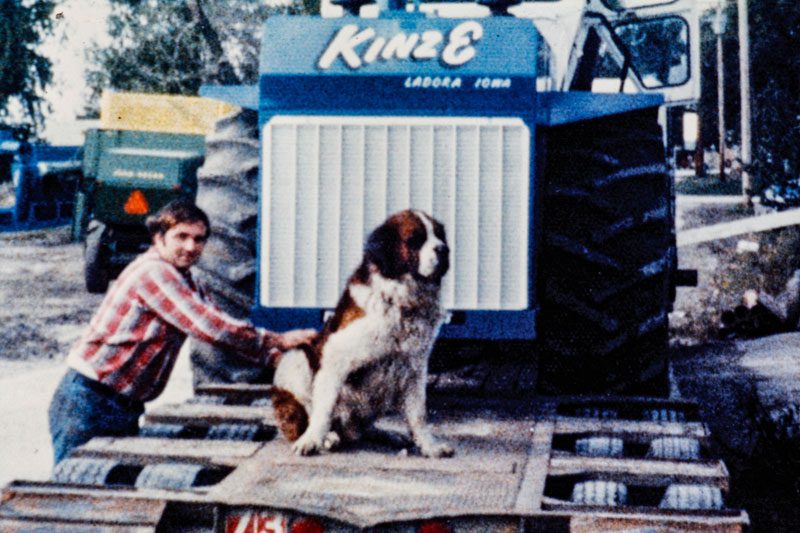
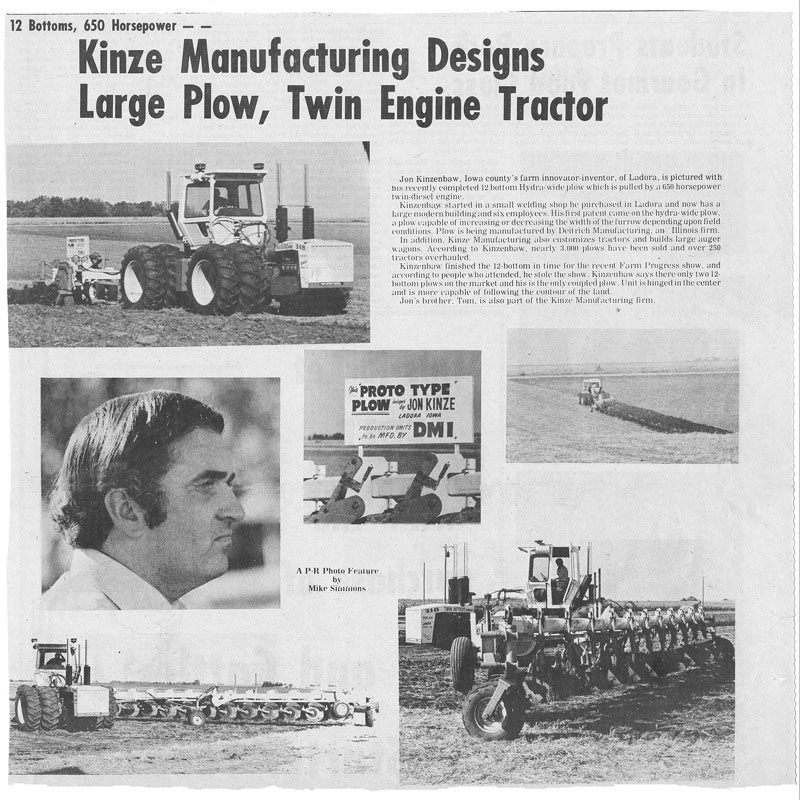
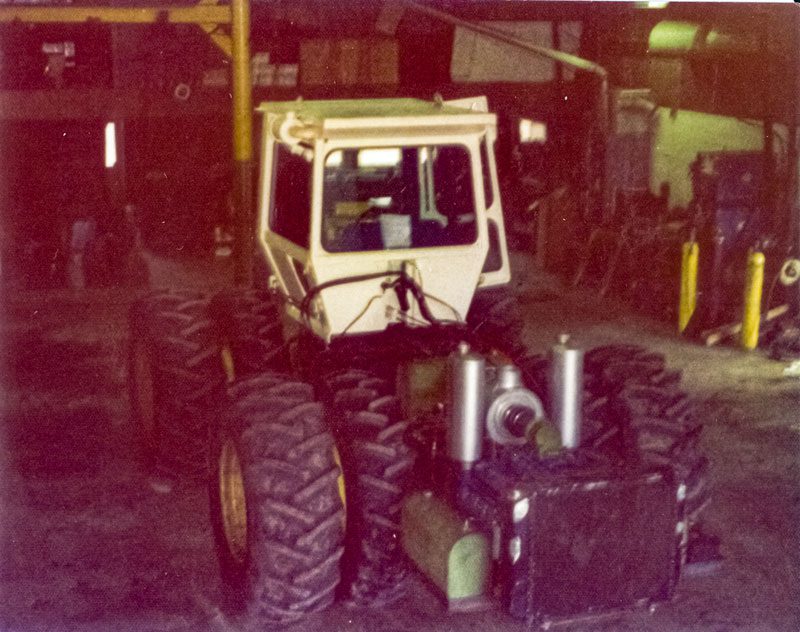
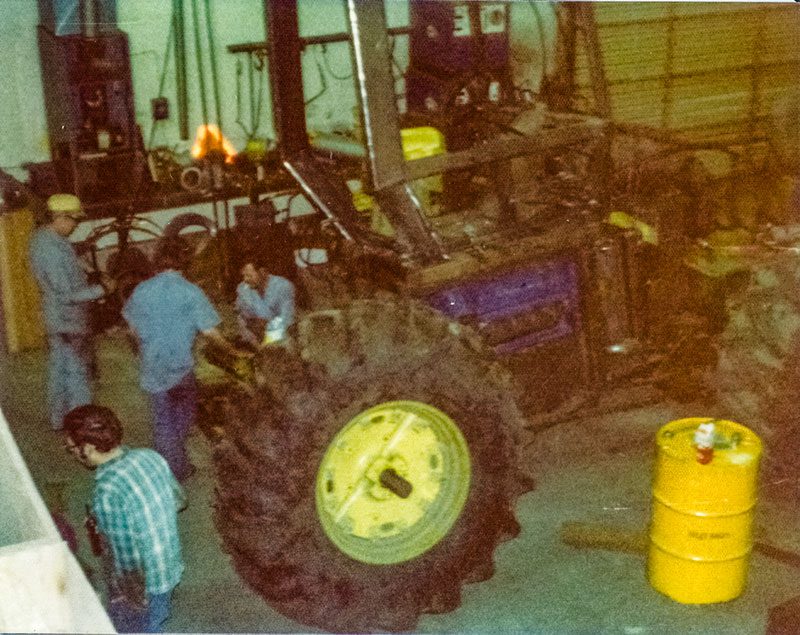
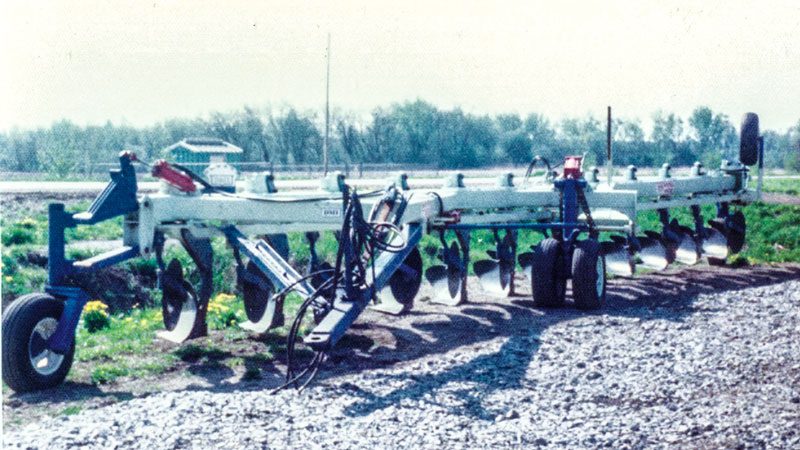
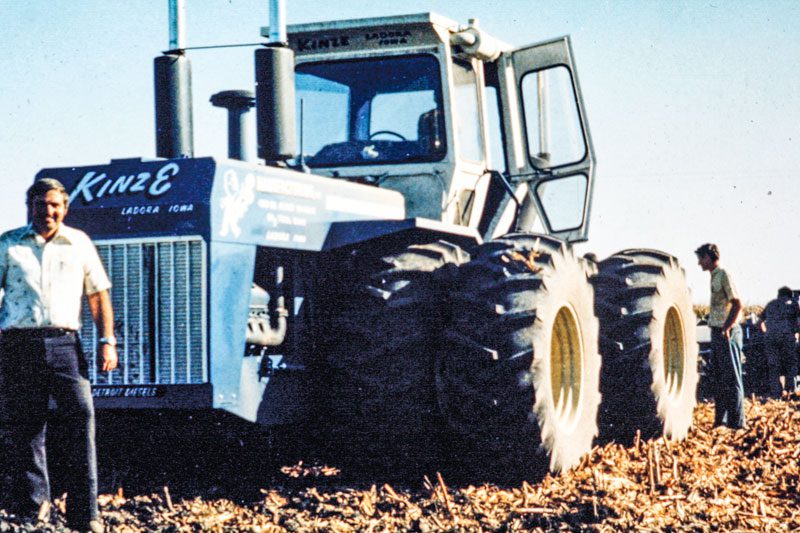
Stealing the Show
By Monday morning, we had the lettering and decals on, and the tractor was finished in the nick of time. Friends who had lowboy trailers — Don and Dale Chilcote, who owned Chilcote Farms at Belle Plaine, Iowa, loaded the tractor and plow on separate trailers and hauled them the 155 miles to Fort Dodge. We got into a test field late Monday afternoon and tried it once more to make sure it was ready to go. It was.
Late the next morning at the Farm Progress Show I was asked to lead the procession of all the tractors and plows to the field. The show supervisor had seen me in action three years previous with the re-powered 5020 and the seven-bottom plow, and he knew that I could plow and that I knew how to lead. He asked, “Can you break land with that?” I said, “Sure. All I do is raise the front wheel up on the plow to the bottom setting and break the land.” He said they were a little behind and didn’t have the fertilizer applied yet. “We want you to set that plow in the ground and start out across the field, but we want you to stall and kill some time. When you get far enough across the field and most of the plows can get in behind you, stop and kill some time. I’ll give you the high sign and when I do, you pull ahead a little ways and then you stall again. If you can kill about an hour getting across that field the first time, we’ll get the fertilizer spread.”
I did just that and decided to make it a little entertaining. Every time I had stopped, people swarmed around the tractor. So I got out and leisurely walked all the way around the tractor and then out onto the plowed ground, then walked back along the plow toward the tractor. It was so crowded, you almost had to excuse yourself to get in there. I was stopping to check every plow bottom, including the depth of the plow, and generally was just killing time, visiting with several of the farmers as I went. When I got back to the ladder that went up over the fuel tank and into the cab, there was a guy sitting in the cab, looking things over. Two more guys were standing on the ground ready to get in when he came down. I was going to excuse myself and get in, but this guy at the bottom threw his arm across in front of me, grabbed the handrail and told me, “You just wait your turn, buddy.”
Since we needed to be killing some time, I went to the end of the line and waited. When the guy who elbowed me out climbed up, he looked it over. Took his time. When he got back to the ground, he gave me a, “Okay, smart aleck, now it’s your turn,” kind of look. So I went up the ladder, got in, sat down, stepped on both clutches and reached over and started to pull it in gear. And when I pulled it in gear, I looked back at the ground and this guy was looking up at me with his mouth wide open.
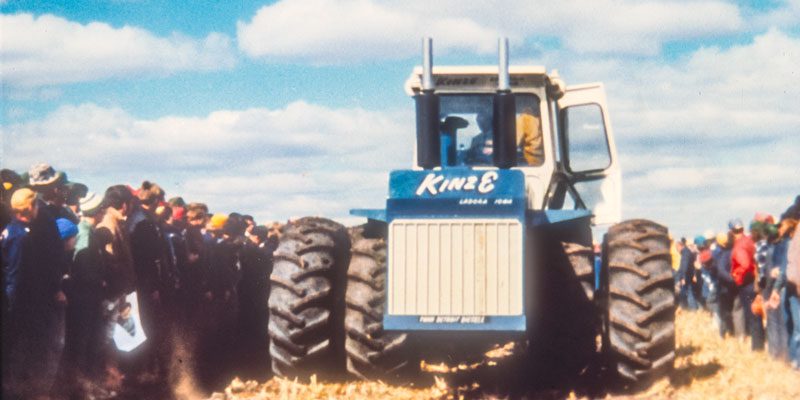
Every time I stopped, people were all over and under the crazy thing, so to get them to move, I had to stoke up the engines, make a little racket and shake it a bit. That let them know that Big Blue was getting ready to move and they should get out of the way.
There was still more time to kill, so I had more fun. I spun the front wheels into the dirt about a foot and got “stuck.” Then I switched to the back engine and spun those wheels down into the dirt. The crowd was murmuring and pointing. Some were pleased that I’d gotten myself into a fix. People are funny. There are always some who are waiting for you to fail. It was fun to see their reactions when I put both front and back axles into gear and just drove away. Some of the looks on their faces were priceless.
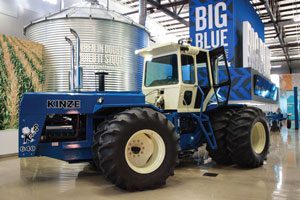
Story Notes
The preceding story is an excerpt from Jon Kinzenbaw’s book, 50 Years of Disruptive Innovation, second printing, ©2021, Kinze Manufacturing, Inc. Big Blue and its companion 12-bottom plow are on permanent display at Kinze’s Innovation Center in Williamsburg, Iowa. Plan a trip to Kinze to see Big Blue and the factory for yourself.
For More Information
Watch Big Blue and the 12-bottom plow operating in Kinze’s 50th Anniversary video (2015).
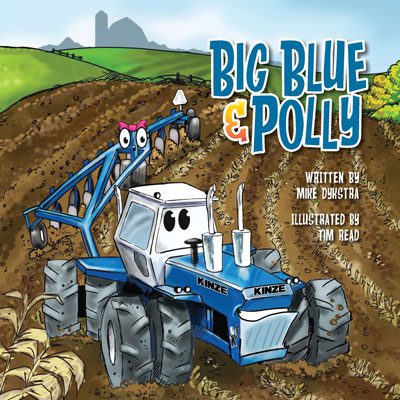
Purchase the book, 50 Years of Disruptive Innovation, for this story and many others about Jon’s early years and the growth of Kinze.
Purchase the children’s book, Big Blue & Polly, and read the story of Big Blue to your children or grandchildren.
